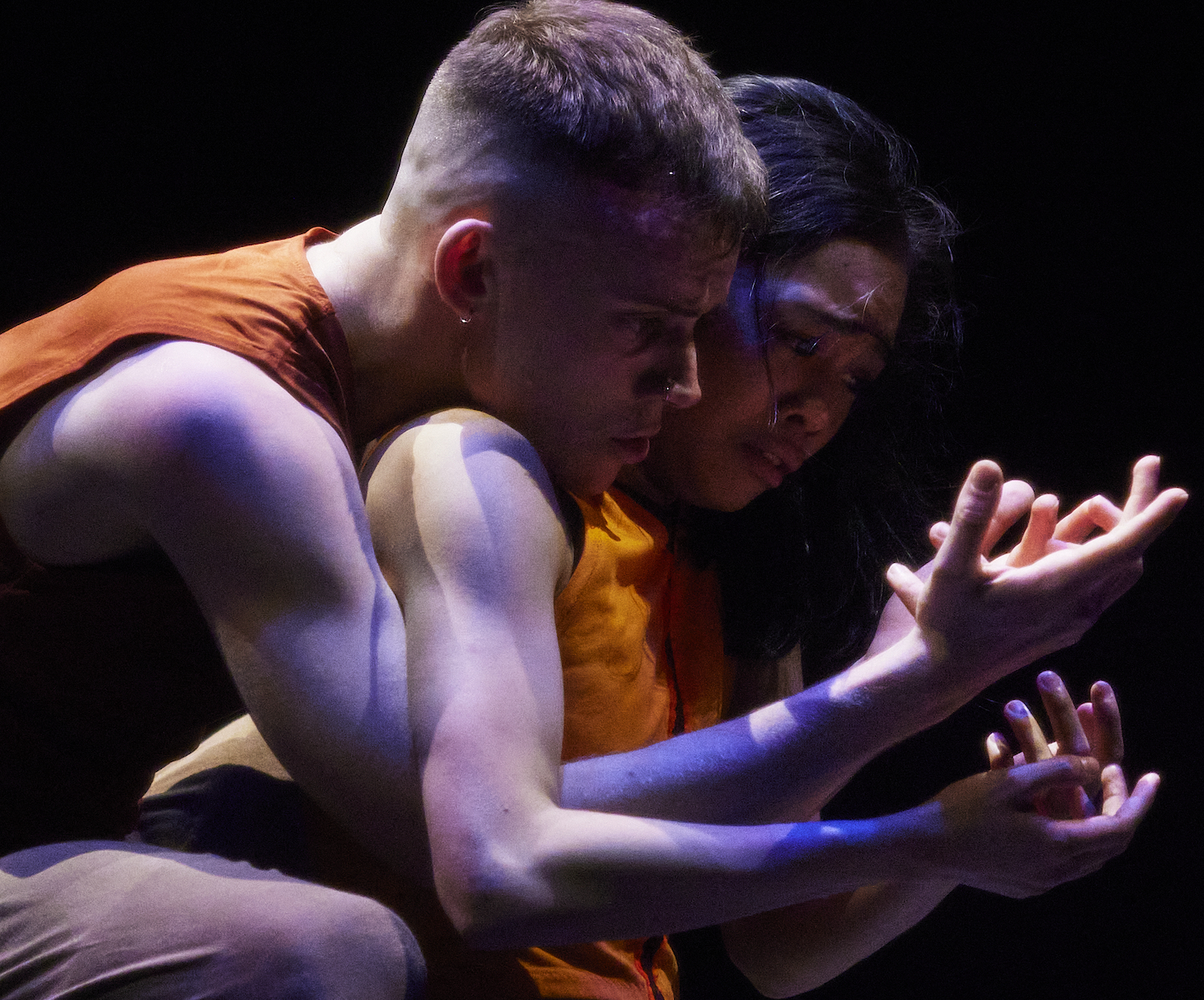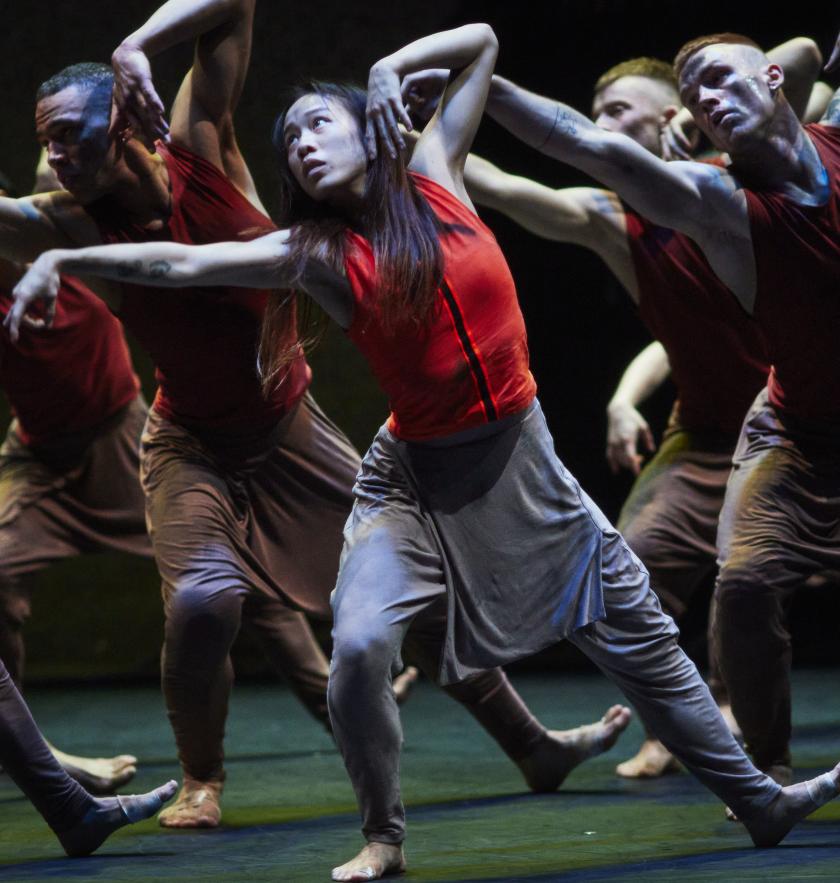Akram Khan Company promises “a magical dance-theatre retelling of Kipling’s classic”, and that’s more or less what you get. The choreography is striking and inventive, the dancing and staging superb.
What work less well is the overall tone, which, for a piece that announces it is aimed at the world’s children as well as its adults, is pretty dark and doom-laden (there is no guidance here of its suitability for younger age groups), then veers towards levity, as if to balance out the gloom.
Most older children, of course, won't be fazed by this bleak vision and don’t need telling that the planet is becoming uninhabitable, for both the humans who are to blame for this catastrophe and for the poor animals that aren’t. They won’t blink at Mowgli’s story being repurposed as an eco-disaster saga set in 2029, where the wolf-raised man-cub becomes a climate change warrior, sent back by the animals to the humans to teach them how to live with nature properly. Mowgli is also a girl in this version (Jan Mikaela Villanueva), initially separated from her family by the rising waters taking over whole cities. Not all of her animal companions survive their encounters with Man, as in Kipling’s Jungle Book stories.
But whoever is in the audience, the problem for Khan was to get his eco-message across emphatically while avoiding making the piece too much of a dirge. His answer is to give it sumptuous, arpeggio-rich music (by Jocelyn Pook), plaintive South Asian songs and larky dialogue, delivered by a soundtrack prerecorded by a mix of actors and dancers.
 There is no animal costuming, so this dialogue serves as a guide to the plot; instead, there is animation (by Adam Smith), beautiful line drawings projected onto some kind of scrim at the front of the stage. Rain lashes down, whales rear up, kites fly, monkeys hold court. Best of all, giant elephants lope on, stately and sage, Hathi in particular serving as a font of wisdom that guides the other animals’ decisions.
There is no animal costuming, so this dialogue serves as a guide to the plot; instead, there is animation (by Adam Smith), beautiful line drawings projected onto some kind of scrim at the front of the stage. Rain lashes down, whales rear up, kites fly, monkeys hold court. Best of all, giant elephants lope on, stately and sage, Hathi in particular serving as a font of wisdom that guides the other animals’ decisions.
Hang on: talking animals, animation, music? Is this Disney by other means? Not at all. Khan’s Baloo the bear (Tom Davis-Dunn, pictured above) doesn’t sing jolly tunes, though he does have a wonderful comic waddle, with feet turned out and hips and arms swaying. On the prerecorded voiceover he seems to have a Russian accent, though the sound tends to arrive as a babble of voices, and it isn’t always clear who is speaking.
Useful though the plot-prompts provided by this soundtrack are, I would have preferred the piece without it, or at least with much less of it. It’s as if Khan doesn’t quite trust his moves to tell the story on their own, but I’m pretty sure they could have. The ensemble sections are magnificent, the 10 dancers often in a tight grouping that moves between wide-legged stances to crouched walking, upper bodies writhing. Drumbeats drive them on, katak technique adding wonderfully nimble feet and ultra-expressive undulating arms and hands. At times they wheel and turn like a murmuration of starlings. When they are portraying he Bandar-log, here monkeys led by S1 (Harry Theodora Foster) who have escaped from lab-experiments and now want to become human, they caper and lollop in a way that reminds you they are simian, but without any hint of caricature.
The props and onstage scenery are minimal. Miriam Buether’s design is simplicity itself: piles of cardboard boxes on either side of the stage, and also – a masterstroke – for the body of Kaa, the rock python, held up by the dancers to simulate her serpentine movements. Kaa’s boxes start big at her head, diminishing in size towards her tail; two blue/green circles on the first box serve as her blank staring eyes. It’s a creation that injects just the right level of humour, while somehow sustaining a sense of menace.
Elsewhere, the tone is more uneven. The voiceover veers towards knockabout panto at times, which sits oddly with all the solemn pronouncements about the death of the planet and the extinction of wildlife. The dialogue also seems oddly separate from the stage action, not organically growing out of it: maybe that’s why a feeling of greater connection with the dancers doesn’t quite materialise.
That’s a shame as the dancers of the Akram Khan Company, who come from all over the world, are an exceptional troupe giving a five-star performance.
- Jungle Book reimagined is at Sadler’s Wells, EC1 until April 15
- More dance reviews on theartsdesk














Add comment